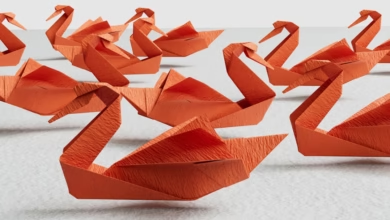Exploring Jewelry Metals: The Art of Gold, Silver, and Platinum in Sustainable Crafting and Design Trends

Jewelry has long been a cherished form of expression and a significant investment, with metals playing a crucial role in its creation. Among the myriad of options available, gold, silver, and platinum stand out as the primary jewelry metals, each offering distinct properties and aesthetic appeal. In an era where sustainability and innovation are at the forefront, understanding these precious metals and their impact on jewelry design has never been more essential. This article delves into the intricate world of jewelry metals, exploring the role of gold, silver, and platinum in crafting timeless pieces, the influence of metal trends on both precious and industrial metals, and the importance of sustainable metal production through recycling and advanced metallurgy. Whether you're a jewelry enthusiast, a collector, or someone considering gold investing or silver investing, this comprehensive guide will illuminate the fascinating interplay between these essential metals and their applications in contemporary jewelry manufacturing. Join us as we examine the evolving landscape of jewelry metals and the future of sustainable practices in this vibrant industry.
- 1. Understanding Jewelry Metals: The Role of Gold, Silver, and Platinum in Crafting Timeless Pieces
- 2. The Impact of Metal Trends on Precious and Industrial Metals in Jewelry Design
- 3. Sustainable Metal Production: Exploring Recycling and Metallurgy in Jewelry Manufacturing
1. Understanding Jewelry Metals: The Role of Gold, Silver, and Platinum in Crafting Timeless Pieces
Jewelry metals play a crucial role in crafting timeless pieces that not only enhance personal style but also reflect the intricate art of metallurgy. Among the most sought-after jewelry metals are gold, silver, and platinum, each offering unique characteristics that cater to diverse tastes and preferences.
Gold, a precious metal, is renowned for its luster and malleability, making it an ideal choice for intricate designs. Its resistance to corrosion ensures that gold jewelry retains its beauty over time, a key factor in gold investing. The various alloys created by combining gold with base metals like copper and silver allow for a range of colors, from traditional yellow gold to modern rose gold. This versatility in metal fabrication has made gold a staple in the jewelry industry.
Silver, another precious metal, brings a bright, reflective quality that enhances the visual appeal of any piece. Its relatively lower cost compared to gold and platinum makes it accessible for a wider audience, promoting silver investing. However, silver is more prone to tarnishing due to metal corrosion, which requires regular maintenance. Despite this, the allure of silver remains strong, especially in contemporary designs that utilize metal alloys to create unique textures and finishes.
Platinum, known for its durability and rarity, is often considered the most prestigious of the jewelry metals. Its weight and strength make it an excellent choice for setting precious stones securely. Unlike gold and silver, platinum does not require frequent polishing, making it a low-maintenance option for jewelry lovers. The high cost associated with platinum is often justified by its long-lasting quality and status as a symbol of luxury.
In recent years, the jewelry industry has seen a shift towards sustainable metal production, with an increasing focus on metal recycling. This practice not only helps reduce waste but also addresses the environmental concerns associated with metal mining. By utilizing recycled metals, jewelers can maintain the quality and integrity of their pieces while contributing to a more sustainable future.
As the trends in the jewelry market evolve, the importance of understanding these metals—along with their industrial counterparts such as steel, aluminum, and copper—remains vital for both consumers and makers. Exploring the balance between precious and non-ferrous metals, and their applications beyond jewelry, such as in aerospace and automotive industries, highlights the versatility and significance of metal alloys in crafting timeless pieces. Whether for personal adornment or investment purposes, the appeal of jewelry metals like gold, silver, and platinum endures, ensuring their place in both traditional and modern design.
2. The Impact of Metal Trends on Precious and Industrial Metals in Jewelry Design
The jewelry industry is profoundly influenced by evolving metal trends, which impact both precious and industrial metals used in jewelry design. As consumer preferences shift towards sustainability and ethical sourcing, the demand for precious metals such as gold, silver, and platinum continues to grow. These metals not only hold intrinsic value but are also seen as reliable investment options, driving trends in gold investing and silver investing. Additionally, the rise of metal recycling practices has become essential in reducing the environmental footprint of jewelry production, making it a focal point for sustainable metal production.
On the other hand, industrial metals play a significant role in contemporary jewelry design. The incorporation of base metals, such as aluminum, copper, and zinc, allows designers to create innovative, cost-effective pieces that appeal to a broader audience. Furthermore, the intersection of metallurgy and modern technology has led to the development of new metal alloys, enhancing the durability and aesthetic appeal of jewelry. For instance, 3D printing metals are revolutionizing the production process, allowing for intricate designs that were previously unattainable.
As the jewelry industry continues to evolve, the influence of metal trends will also extend to other sectors, including aerospace and automotive industries, where metals like titanium and palladium are increasingly used. The integration of these industrial metals into jewelry not only enhances functionality but also reflects a growing trend toward versatility in design.
Moreover, with the increasing focus on energy metals and battery metals, such as lithium, there is potential for innovative collaborations between jewelry design and technology sectors. As the market for rare earth metals expands, designers are likely to explore these materials to create unique jewelry pieces that resonate with environmentally conscious consumers.
In conclusion, the impact of metal trends on both precious and industrial metals is shaping the future of jewelry design. By embracing sustainable practices, utilizing innovative materials, and keeping pace with market demands, the jewelry industry can continue to thrive while meeting the needs of modern consumers.
3. Sustainable Metal Production: Exploring Recycling and Metallurgy in Jewelry Manufacturing
Sustainable metal production has become an essential focus in the jewelry industry, particularly as consumers increasingly demand ethically sourced materials. The process of metal recycling is pivotal in reducing the environmental impact associated with traditional metal mining. By repurposing precious and non-ferrous metals, such as gold, silver, and platinum, the jewelry sector can minimize waste and lower its carbon footprint.
Recycling metals not only conserves resources but also ensures that jewelry manufacturers have access to high-quality materials without the need for extensive mining activities. The metallurgy involved in recycling processes allows for the recovery of a variety of metals, including rare earth metals and base metals, which are often used in metal alloys for jewelry crafting. This practice supports sustainability by reducing the need for new metal commodities and helps to stabilize prices in the market for gold investing and silver investing.
Moreover, advancements in metal fabrication techniques, such as 3D printing metals, have revolutionized how jewelry is created. These innovative methods enable the efficient use of materials while minimizing waste. As metal trends evolve, the incorporation of recycled metals into jewelry design not only meets consumer demand for sustainable options but also showcases the beauty and uniqueness of these reclaimed materials.
In addition to precious metals, the conversation around sustainable metal production encompasses a broader range of industrial metals, including aluminum, copper, and zinc, which are often used in various applications from construction metals to aerospace metals. By embracing metal recycling and sustainable practices, the jewelry industry can lead the way in fostering a more environmentally conscious approach to metal mining and production, ultimately contributing to a greener future.
As consumers become more aware of the environmental implications of their purchases, the shift toward sustainable practices within the jewelry sector is not just a trend; it is a necessary evolution. Emphasizing the importance of sustainable metal production will not only protect our planet but also enhance the value and desirability of jewelry crafted from responsibly sourced materials.
In conclusion, the world of jewelry metals is both intricate and fascinating, showcasing the timeless allure of gold, silver, and platinum in crafting exquisite pieces. As we've explored, the impact of metal trends extends beyond aesthetics, influencing the market for precious metals and industrial metals alike. The rising focus on sustainable metal production highlights the importance of metal recycling and responsible sourcing, ensuring that the jewelry industry can thrive without compromising our planet.
Moreover, understanding metallurgy and the properties of various metals—ranging from base metals like copper and zinc to rare earth metals—enhances our appreciation for the craftsmanship involved in jewelry design. As we look to the future, innovations such as 3D printing metals and advancements in metal fabrication promise to shape the industry while addressing concerns related to metal mining and metal corrosion.
Ultimately, whether one is interested in gold investing, silver investing, or simply cherishing the beauty of jewelry, recognizing the significance of these metals in both personal adornment and broader industrial applications can enrich our connection to these precious commodities. As we continue to navigate the evolving landscape of jewelry metals, let us embrace both the elegance and the responsibility that comes with crafting and wearing these timeless treasures.





